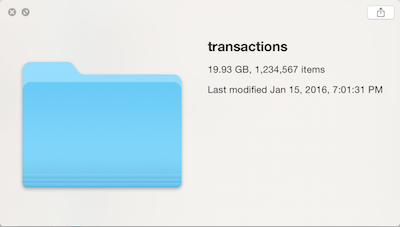It seems as though I missed release notes for version RSiteCatalyst 1.4.6, so we’ll do those and RSiteCatalyst 1.4.7 (now on CRAN) and the same time…
Hamming Codes
This week I’m going to talk, not just about error detection, but also error correction.

Thinking is not something that goes on entirely, or even mostly, inside people’s heads. Little...
“ Thinking is not something that goes on entirely, or even mostly, inside people’s heads. Little intellectual work is accomplished with our eyes and ears closed. Most cognition is done as a kind of interaction with cognitive tools, pencils and paper, calculators, and, increasingly, computer-based intellectual supports and information systems. Neither is cognition mostly accomplished alone with a computer. It occurs as a process in systems containing many people and many cognitive tools. Since the beginning of science, diagrams, mathematical notations, and writing have been essential tools of the scientist. Now we have powerful interactive analytic tools, such as MATLAB, Maple, Mathematica, and S-PLUS, together with databases. The entire fields of genomics and proteomics are built on computer storage and analytic tools.
How-to: Train Models in R and Python using Apache Spark MLlib and H2O
Creating and training machine-learning models is more complex on distributed systems, but there are lots of frameworks for abstracting that complexity.
The Shuttle Challenger Disaster: Reflections and Connections to Data Science
The explosion of the space shuttle Challenger on Jan. 28, 1986, remains one of the worst accidents in the history of the American space program. Two other major fatal space program catastrophes also occurred within a few calendar days of the Shuttle Challenger disaster date: the Apollo 1 fire on January 27, 1967 that killed 3 astronauts, and the Shuttle Columbia disintegration on February 1, 2003 that killed 7 astronauts.
A Million Text Files And A Single Laptop
Why Today’s Big Data is Not Yesterday’s Big Data — Exponential and Combinatorial Growth
(The following article was first published in July of 2013 at analyticbridge.com. At least 3 of the links in the original article are now obsolete and/or broken. I re-post the article here with the correct links. A lot of things in the Big Data, Data Science, and IoT universe have changed dramatically since that first publication, but I did not edit the article accordingly, in order to preserve the original flavor and context. The central message is still worth repeating today.)
Data Mining with Python on Medical Datasets for Data Mining
Theano Tutorial
This is an introductory tutorial on using Theano, the Python library. I’m going to start from scratch and assume no previous knowledge of Theano. However, understanding how neural networks work will be useful when getting to the code examples towards the end.
The Definitive Q&A Guide for Aspiring Data Scientists
I was asked five questions by Alex Woodie of Datanami for his article, “So You Want To Be A Data Scientist”. He used a few snippets from my full set of answers. The longer version of my answers provided additional advice. For aspiring data scientists of all ages, I provide in my article at MapR the full, unabridged version of my answers, which may help you even more to achieve your goal. Here are Alex’s questions. (Note: I paraphrase the original questions in quotes below.)

